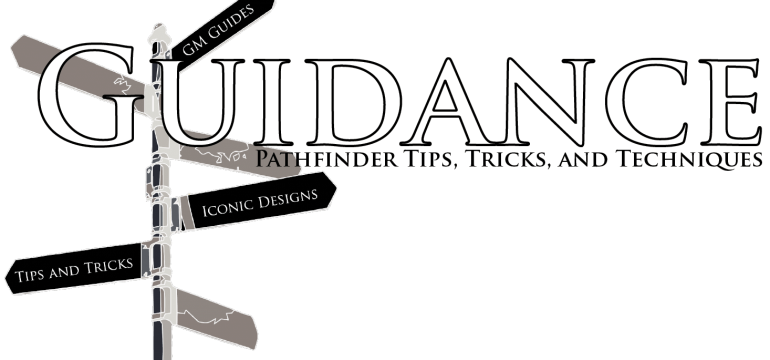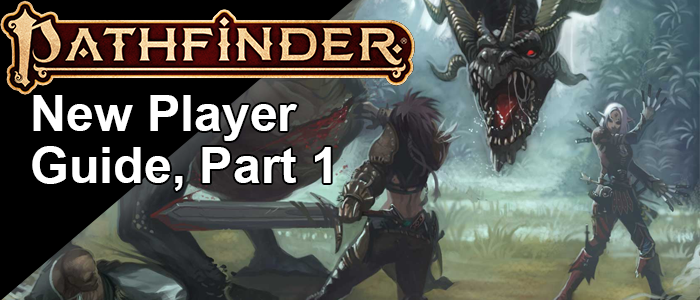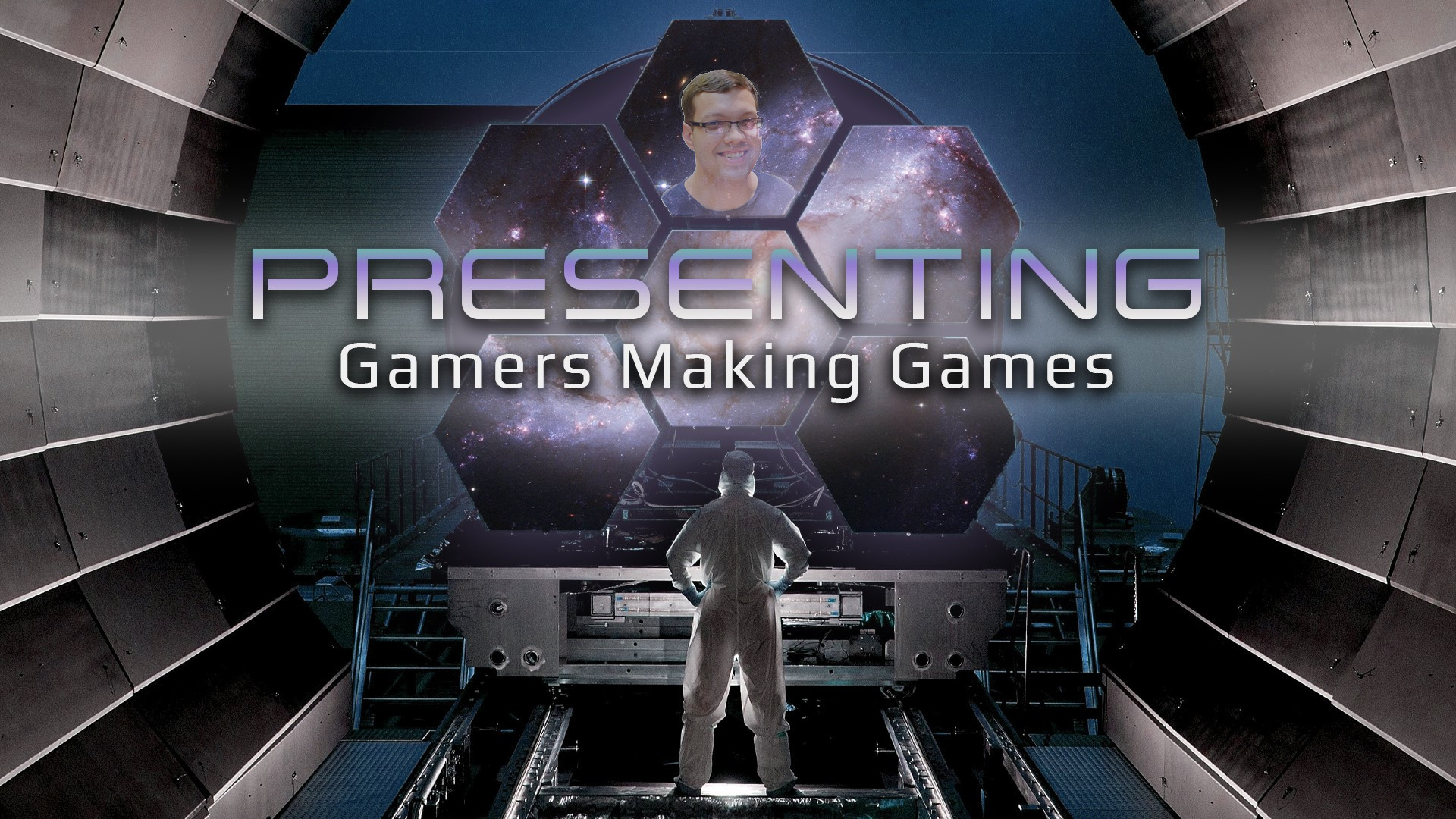Hello, everyone, and welcome to Gibbering Mouth! A blog where I sit here and gibber a bit about my thoughts on various industry topics. Today, I want to briefly talk about something that Paizo’s been pushing hard for the last three years or so, something that many of our newer community members probably take for granted. That’s right, I’m talking about prewritten adventures and their tendency to include brand-new player options in them!
… you did know those were there, right? No? Well, honestly, that’s not too surprising. Paizo doesn’t really market their adventure content for players after all. But if you look in any recent Starfinder AP volume and literally any Pathfinder 2E AP volume, you’ll find player options. And no, I’m not talking about a fancy named magic sword or a powerful MacGuffin or whatever, I’m talking class options that are part of your character build, alternate class features that dramatically change up how your character works, new feats, that and literally anything else. Now, personally, I have complicated feelings about this topic, and for my first article of the new year I’m gonna share those complicated feelings with you, and probably get a whole bunch of people unreasonably upset at me in the process!
That is, after all, what I’m here for. I think?
They Got Their Peanut Crunch in My Marshmallow Fluff: A Memoir
Okay, so let me preface this by saying that I did NOT go and reread every volume in my extensive Adventure Path collection, nor do I claim to know all of the content that exists in every Adventure that Paizo has ever published. Sorry, I’m good but I’m not THAT good.
At any rate, Pathfinder adventures have always been split into three basic parts: the “Adventure,” the “Bestiary,” and the “Toolbox” going back as far as I’ve ever seen. In general:
- The Adventure is the game you actually play with your friends.
- The Bestiary is a collection of monsters and NPCs that are on-theme for the adventure that may or may not be featured within it. A given is that the major antagonists (and sometimes other helpful NPCs) always receive a write-up in this section.
- The Toolbox is a collection of articles that are useful, but not always necesscary, for running the Adventure.
Overall, the Adventure Path design and layout strongly resembles that of a magazine, which makes sense. As a company, Paizo was originally founded to handle Wizard of the Coast’s old Dungeon magazine, and when they split off from Dungeons and Dragons to build their own content they largely kept the layout that their staff was comfortable working with. But you’ll note that in the description, there isn’t a place where I’ve necessarily said that Player Options exist. Part of that is due to the difficulty in defining what a player option is; in fact, I’ll even go as far as to hazard that no one’s ever sat down and tried to define what, precisely, we mean when we say “this is a player option” beyond “a thing that players take. Personally, I think player options are about two things—agency and purpose.
- Agency refers to how players acquire options. I think we can all agree that despite giving players special powers and players having a decision how they manifest, Horror Adventures’s corruptions weren’t really a player mechanic. After all, you have no real agency in whether you acquire a corruption! To some extent, status as a player option necessitates that the rule is something that a player can decide to take or not take, so a corruption, despite providing player power, is not truly a player option. Along the same lines, I don’t think that the mythic ruleset from Mythic Adventures was truly a player option either. After all, players could be told, “We’ll be using Mythic Adventures,” sure, but until the GM says that the book is being used there’s an understanding that the book isn’t for standard play.
- Purpose refers to what the option does. Ultimately, something needs to benefit a player in order to be a player option. That’s why at the end of the day, players typically don’t consider new deities to be new player options despite having the agency to choose which deity their player worships, if any. Along similar lines, your character’s ethnicity is also a choice that your character makes that you as a player have complete agency over, but most players wouldn’t consider the addition of a new Golarion human ethnic group to be a new player option by itself—it would need to have some spiffy new feats attached to it, and even then one might argue that it’s the feats rather than the ethnic group that are the true option.
So, why go through all this trouble defining player options in an article about Adventure Path volumes and player content? I think it’s important to have these types of definitions so we can pinpoint the difference between old-style “player options” in Adventure Path volumes and new-style ones.
- In Pathfinder 1E Adventure Paths, “Player” options, if any existed, were mostly kept to the Toolbox and usually took the form of unique magic items and treasures discovered during the Adventure. Equipment sits in a weird spot in regards to its status as a player option, since it’s true that equipment often plays a crucial role in a character’s build (purpose), but one can make the argument that one’s agency in acquiring gear is limited by the GM (agency). What do I mean by this? Well, at the end of the day the amount of wealth a player acquires really isn’t in their hands. There’s guidelines, sure, but anyone who’s played a Pathfinder or a Starfinder adventure is aware of how stingy those books typically are in regards to wealth, especially compared to Organized Play. I’ve been in home games where the GM showered us in treasure and I’ve been in home games where the GM starved us of money; sometimes those two feels were the same exact game at different stages of the story. too. Personally, I don’t see new equipment as player options; especially not as presented in an Adventure Path, where the equipment is earned during the adventure. Players have the agency to decide whether or not to use the item or to sell it for something else, sure, but at the end of the day being handed treasure at the GM’s whims just doesn’t feel like a concrete part of a character to me in the same way that I level up, I get the new ability.
- Starfinder Adventure Paths were advertised as having articles pertaining to players, but prior to Attack of the Swarm they largely just did what PF1 adventures did; mostly new equipment and treasure, with occasional options for Starships and a new player species here or there. I hesitate to call Starship options player options, however. While it’s true that the Starship is basically built like a character, it’s sort of a character you only play with once every few levels or so. Around Attack of the Swarm, the idea of what sort of content could be in a Starfinder Adventure Path volume started to change, however. We started getting new spells, new class features, and even a few archetypes here and there. Some good examples include Fly Free or Die Vol 2’s new solar manifestation, Lunar Weapon, which allows a solarian to form an operative melee weapon for their solar manifestation, or Attack of the Swarm Vol 6’s new spell sergeant archetype, which is basically Pathfinder 1E’s magus as an archetype. These are clear examples of options that players can take and are even described as such.
- Pathfinder 2E Adventure Paths basically came out of the gate in the same vein as Starfinder APs, with every volume having new options for players. Famously, Vol 2 of Extinction Curse introduced an entire new ancestry, the shoonies, and each Vol 6 of every AP we’ve seen so far has had new capstone feats for almost every class that allows characters of those classes to have a capstone ability that reflects the AP’s themes. Vol 6 of Age of Ashes even had new backgrounds that low-level characters could take to reflect that they lived in a world where the PCs of Age of Ashes succeeded in stopping the Scarlet Triad. As with Starfinder, these are clear examples of player options in Adventure Path volumes, but that’s not even where this stops. The new Pathfinder Adventure, The Slithering, features the oozemorph archetype players can take, so now we’re looking at a world where Player Options aren’t just confined to AP volumes, but all adventures in general. Organized Play is starting to do this too, with several scenarios unlocking access to special feats.
But Did We Make a Fluffternutter Sandwhich?
Y’all ever hear of a Fluffernutter Sandwich? It’s from Massachusetts and is kind of a Northeast USA thing; basically, you take Marshmallow Fluff and spread it on one side of a sandwich, then spread peanut butter on the other side. Slap ’em together and you have a delicious sandwich that’s full of peanut butter and marshmallow goodness. It’s an example of how mixing two very different things can create something wholesome and unique. But is slapping Player Options into Adventure volumes, two very different kinds of content, a Fluffernutter Sandwich, or is it a hot mess? There are advantages and disadvantages to both.
Advantages:
- More people buy the Adventure. This is REALLY good for Paizo, since they need to make money on their work. If only one out of every five players is buying adventures, at what point does adventure writing stop being profitable? And if adventure writing stops being profitable, people at Paizo lose jobs and Paizo arguably loses its one edge over Wizards of the Coast—that Paizo puts out tons of high-quality pre-written adventures.
- More player options get published. This is also a really good thing for players. After all, more player options means more control over what your character can do, especially when those options are high-quality and vetted by many different people. Having player options in Adventure Volumes is also really crucial to Starfinder, a game that typically gets less content per year than Pathfinder due to the limited size of its team. Pathfinder, after all, has the Lost Omens line, which gives it an edge of hundreds of pages over Starfinder.
Disadvantages:
- Finding Content Becomes Harder. All of a sudden, you can’t just go to your major book and be all like, “Oh hey, I know if I’m looking for solar manifestations I should look in a hardcover.” Now you have to remember to check every Adventure Path volume you have too, which can get overwhelming fast. APs don’t even have the adventage of Player Companions, where at least you could go, “Oh, this ability was a fighting ability, I should check Weapon Master’s Handbook or Melee Tactics Toolbox for it.” This is especially true when the content doesn’t necessarily fit the theme of the book it’s in; for example, Threefold Conspiracy Vol 6 has a bunch of new technomancer alternate spell caches, and those new spell caches aren’t themes around subterfuge or intrigue or anything else that would make sense for an AP about conspiracies.
- The Vetting Isn’t Always As Good. I have tons of friends at Paizo who are probably going to be mad at me when I say this, but generally speaking player options in an AP are more likely to have problems with them that those in a big hardcover, and the reason is almost always due to their being fewer eyes on an Adventure than on a big hardcover book. Here’s an example—Threefold Conspiracy Vol 6 has a mystic epiphany that allows the mystic to gain a solar flare, exactly like a solarian. This is balanced around a similar option in Character Operations Manuel that allows a mystic to gain a solar weapon. There’s just one problem, however. In Threefold Conspiracy, the new mystic epiphanies aren’t labelled with the minimum mystic level you need to have to select them. In a big hardcover, Paizo freelancers typically get to participate in a big open forum where they discuss new options and bounce ideas like this off of each other. A typical Paizo hardcover has over a dozen freelance authors on it, so even if an Adventure volume has everyone on the Starfinder team double-checking all of the new options (which I find unlikely, simply due to the fact everyone has their own deadlines to hit), typically only one freelancer is getting to look at each of those options, which is already a ton fewer people. In my experience, developers and designers are masters of making new rules and adhering to a system’s mechanics, but freelance authors tend to have really niche interests that cause them to recognize small things that bigger-picture developers will often miss, like the fact that technically there’s no listed level at which a mystic can take a solar flare. That isn’t a strike against Paizo developers or designers; the human brain can literally hold only so much information at a time, and the amount of work that goes into any book is herculean.
- Players Don’t Always Know To Pick Them Up. Players aren’t really conditioned to pick up Adventures, and Paizo products don’t really advertise, “Hey! We got options in here for you!” What often ends up happening instead is that the options find their way to Archives of Nethys and players just use that site, or pick up a book if they’re in OP. This can lead to a weird issue where the GM has the book and maybe knows the option exists, but requires that the option be handed out as a reward for the adventure rather than part of the character building process. I’d argue that this line is a difficult one, since it sort of blurs the identity of a player option in my mind. To me, a player option is an expression of player agency, and as soon as the GM has the right to tell you that you can’t take something, it starts to become a little dubious. I’m of a similar thought process when it comes to Uncommon and Rare options in PF2; I get why they’re labelled that way, but I also don’t really like that those labels exist for player options in the first place.
- Adventures Don’t Get Reprinted Typically. It’s worth noting that Adventure Path volumes commonly go out of print and then they’re just not available anymore. This infamously happened with Book 2 of PF1’s Kingmaker, mostly because that volume introduced the Kingdom Building rules that eventually found their way into Ultimate Campaign. I worry that if a player option that people love to the extent that the book gets sold out is printed, that option will just kinda disappear, or if it does come back it’ll be in a changed form, such as how the lore warden fighter was printed in a sold out book and was dramatically changed when it was included in the Adventurer’s Guide years later. That’s a weird case in and of itself because the Lore Warden was definitely too strong, but at what point did they simply not print the thing people liked?
So, What’s the Verdict Alex?

I don’t really think there’s a strong argument for Player Option content as a good thing or as a bad thing for Adventures, because while I think that the issue of finding content becoming harder and the dubiousness of access being problematic, I truly think that getting more people to buy Adventure Path volumes is a good thing for Paizo financially, and I also think that if players have an Adventure sitting around on their shelves, they might be more inclined to read it and one day run it for others. I think that Player Options introduced in APs should be publicly advertised; “This book has a new solarian manifestation!” and whatnot. I also think that the options have to find their way into a proper book in the future, and they should get as much team vetting the first time around as possible to prevent another Lore Warden situation. And they should definitely be subjected to errata even if they can’t be outright reprinted.
Thanks for stopping by! I hope you enjoyed this article. In two weeks I’m going to do a Starfinder Iconic Design where I build a solarian using that shiny new Lunar Weapon solar manifestation I mentioned today. Until then, take care everyone!







